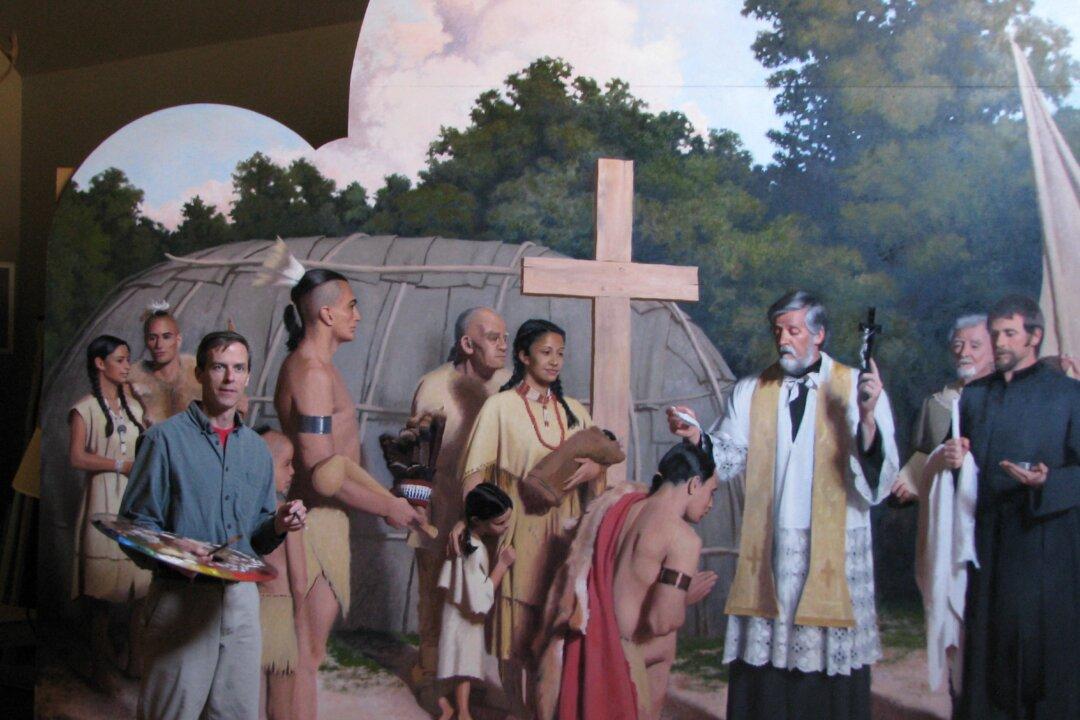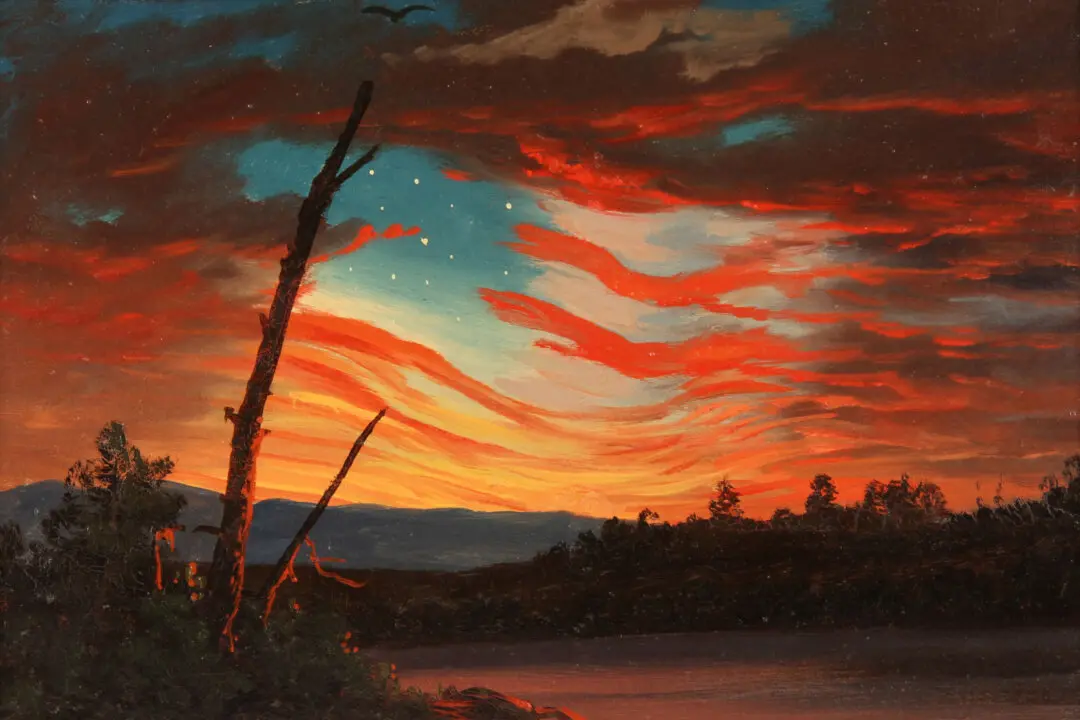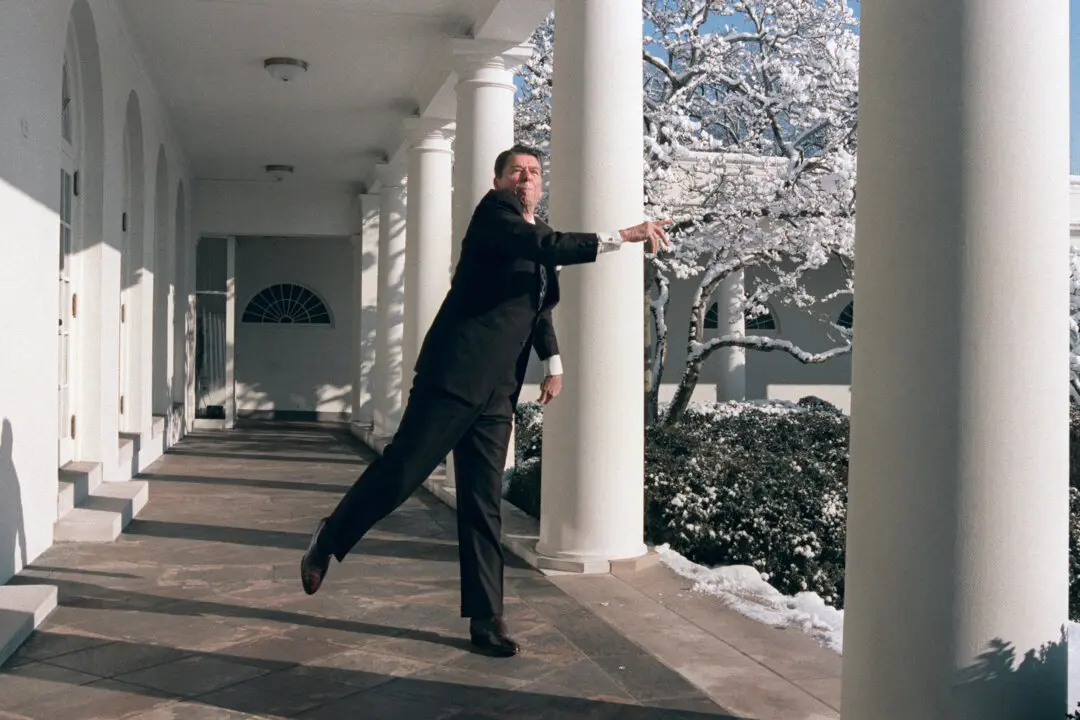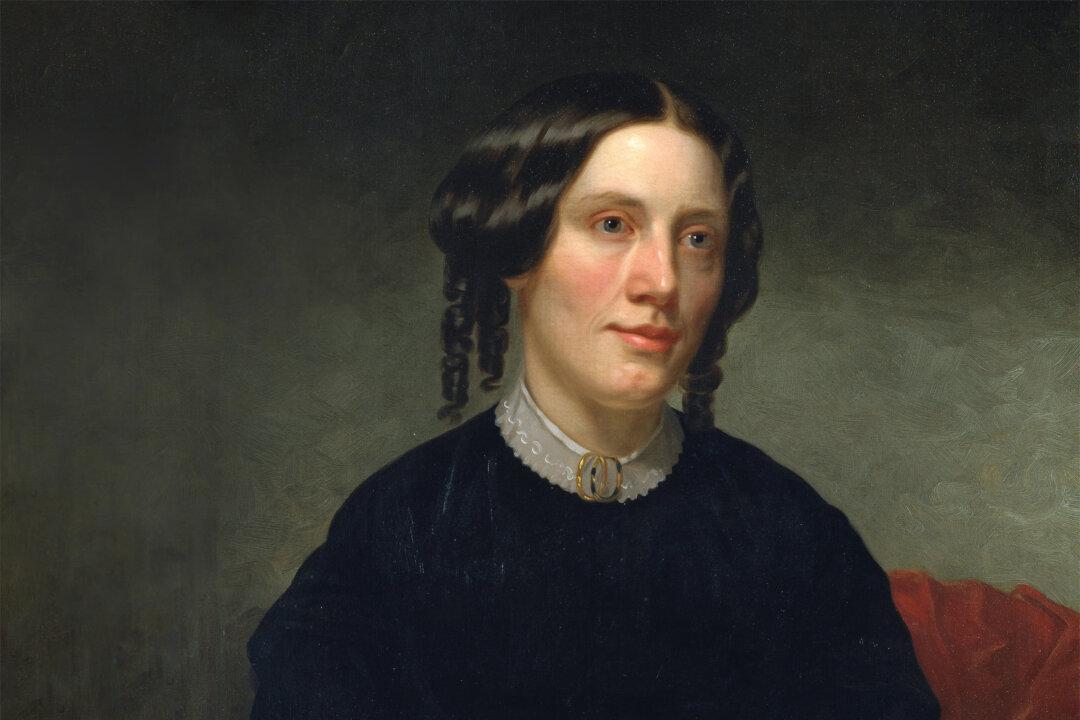BANCO, Virginia—The magic begins as you approach Banco, Virginia, the blink-of-an-eye town five miles north of Madison. The narrow two-lane rolls through dark forests and lush-green fields, the air is damp and soft, and the skies overcast—“Good light for painting,” you’ll learn later in the day. You pull into a small parking lot and study the building at the top of a short inclined yard. With its high-pitched roofs, timbered sides, and enormous window, the structure resembles one of those Baptist churches that dot the countryside in this part of the state.
Once inside, you fall even more deeply under the spell of this place. Here are shelves crammed with hundreds of books (mostly about art), paintings on every wall or stacked against a wall, drawings piled on desks and tables or strewn across a carpet, easels, Mason jars filled with paint brushes, drawing pencils, and somewhat incongruously, bird feathers. In one corner stands an open press filled with clothing and costumes, and on a shelf beneath the enormous window, which today is partly shrouded in black drapes, are seashells, bits of wood, bottles, and more drawings.






